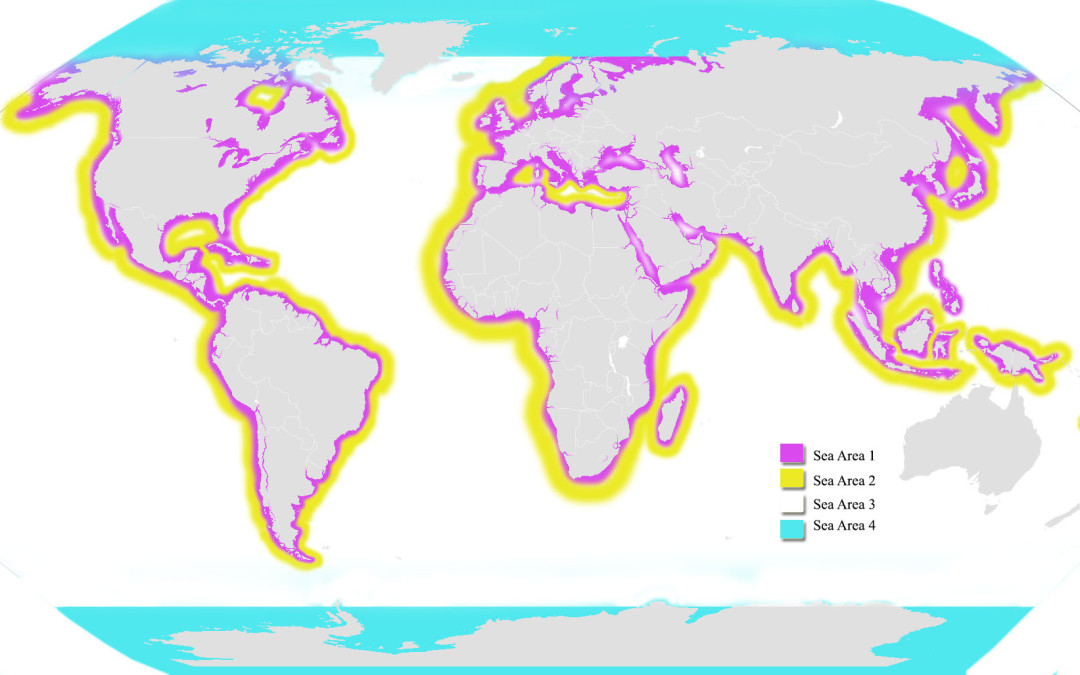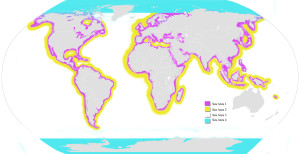From Wikipedia:
“The Global Maritime Distress and Safety System (GMDSS) (SMSSM),is an internationally agreed-upon set of safety procedures, types of equipment, and communication protocols used to increase safety and make it easier to rescue distressed ships, boats and aircraft.
The system is intended to perform the following functions: alerting (including position determination of the unit in distress), search and rescue coordination, locating (homing), maritime safety information broadcasts, general communications, and bridge-to-bridge communications.
Basically depending on the ” Areas of Navigation ” vessels must have the following minimum requirements:
Area 1 (until 30 NM from a coastal station)
- A VHF radio station enable to transmit DSC signals (digital selective calling) on Channel 70 and radio channels 16,13 and 6 (with voice clock present on channel 16).
- One SART (radar transponder central) for vessels under 500 tons and two SART for vessels over 500 tons.
- Two VHF transmitter receiver for vessels under 500 tons and three for vessels over 500 tons.
- A NAVTEX receiver if a vessel is designate to make trips to areas where the NAVTEX service is provided (weather and navigation reports, ship safety)
- A EGC Inmarsat receiver, only if a vessel is designate to make trips in any area in which the MSI Inmarsat services are not provided by NAVTEX or HF NBDP.
- One 406 MHz EPIRB (Emergency Locator Transmitter)
Area 2 (until 400 NM from a coastal station)
The vessels traveling within the Area number 2 besides having all the minimum equipment for the area 1 must use :
- An MF radio installation capable of transmitting and receiving on 2187.5 kHz with DSC and 2182 kHz with radiotelephony; and a DSC receiver, on guard, operating on 2187.5 kHz.
- The ship must also be capable of transmitting and receiving general radio communications using radiotelephony or telegraph direct-printing from:
– One HF station operating on frequencies (nautical) that work between 1,605 kHz and 27,500 kHz bands. (This requirement is usually satisfied by the MF equipment in which all GMSS MF transmit receivers also support HF)-One Inmarsat station ship.
Area 3 (Over 400 NM from a coastal station)
The vessels traveling within the Area number 3 in addition to having to own all the necessary equipment for the area 1 and 2 must use :
- A Inmarsat X Earth Station ship.
- MF 2187.5 kHz radio installation with receiver DSC on guard (could be the same required for A2). Or: – An MF/HF radio installation that can transmit and receive on all distress safety frequencies (Nautical) between 1,605 kHz and 27,500 kHz bands with DSC, radiotelephony and NBD. -A MF / HF guard receiver DSC MF capable to monitor the 2,187.5 kHz, 8,414.5KHz DSC frequencies and on at least one of the DSC safety frequencies between 4,207.5 kHz, 6312 kHz, 12577 kHz or 16,804.5 kHz; at any time, it must be possible to select any of these DSC frequencies. In addition, all vessels must be capable of transmitting and receiving general radio communications using radiotelephony or direct-printing telegraph by a MF / HF radio system operating between bands 1,605 kHz and 27,500 kHz (nautical). This requirement is usually satisfied with the addition of this feature in the MF/HF equipment.


